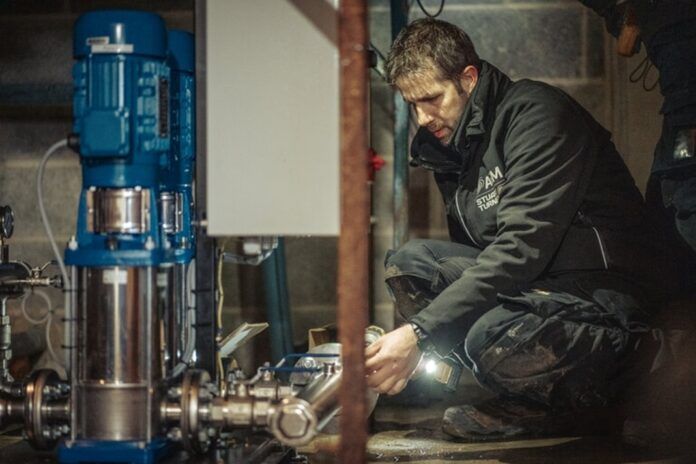
Adam Turner from Stuart Turner Group shared his top tips for achieving a quieter water pump installation.
- Choose the right pressure rating
It might be tempting to go for the most powerful pump available, but a higher-pressure rating, such as a 4-bar pump, can result in more noise than a 2-bar pump. Select the right pressure rating for your shower type or appliance to avoid unnecessary noise.
- Pick the best location
Pump placement is key to reducing noise disturbances. Avoid installing pumps above bedrooms or other quiet areas. Ideally, position the pump over the shower or bathroom if it is being installed in an attic. For cupboard or under-bath, enclosing the pump in a sound-absorbing material can help to reduce noise, however, you must ensure you leave a minimum 80mm clearance around the pump for ventilation.
- Ensure proper hot water connection
A poorly installed pump that draws air in will be much louder. To prevent this, position the pump near the base of the hot water cylinder for a flooded suction setup, which will help reduce air movement and noise.
A dedicated feed direct from the hot water cylinder or storage tank will ensure an air-free connection. The pump must be free to vent at all times, so using a suitable hot water cylinder flange connection, such as the Stuart Turner Top Cylinder Flange, is recommended to ensure the air generated from heated water is able to escape without causing noise issues.
- Use an ‘anti-vibration mounting pad’
Vibrations can travel through floors, amplifying pump noise. Placing the pump on anti-vibration mounting pads will help to absorb vibrations and prevent sound travelling. Never remove the rubber feet from the pump or screw it down. Ensuring the flooring is stable underneath the pump can also help with noise reduction. If possible, placing a concrete slab underneath the pump can further stabilise it.
- Install flexible anti-vibration connecting hoses
Always use the supplied flexible hoses when connecting the pump to surrounding pipework, as they have a dampening effect and reduce the transmission of mechanical vibration from the pump to the joining pipework.
Avoid bending them by more than 30 degrees, as this can create kinks, restrict water flow and increase noise due to pump cavitation.
- Secure surrounding pipework
Loose pipes can create additional noise. Use suitable pipe clips to secure pipework, and opt for swept bends instead of elbow fittings as this will also help to minimise water turbulence and flow restriction, contributing to a quieter system.
If pipes form an inverted U bends, install a stub pipe on the top of the bend with a manual air vent to allow air to escape. Similarly, for horizontal pipework, angle it to fall away from vertical sections to prevent air entrapment, and consider stub pipes with manual air vents when necessary.
If pipework passes through floor or ceiling voids, or runs through notches in joists, lagging the pipes will isolate them from the structure and help to minimise noise transmission. This method is also effective if pipes are attached to walls using larger clips.
For pipework attached to a stud and plasterboard construction, try filling the cavity with fibre insulation or injecting expanding foam. This will close the air gap and further dampen any noise.
